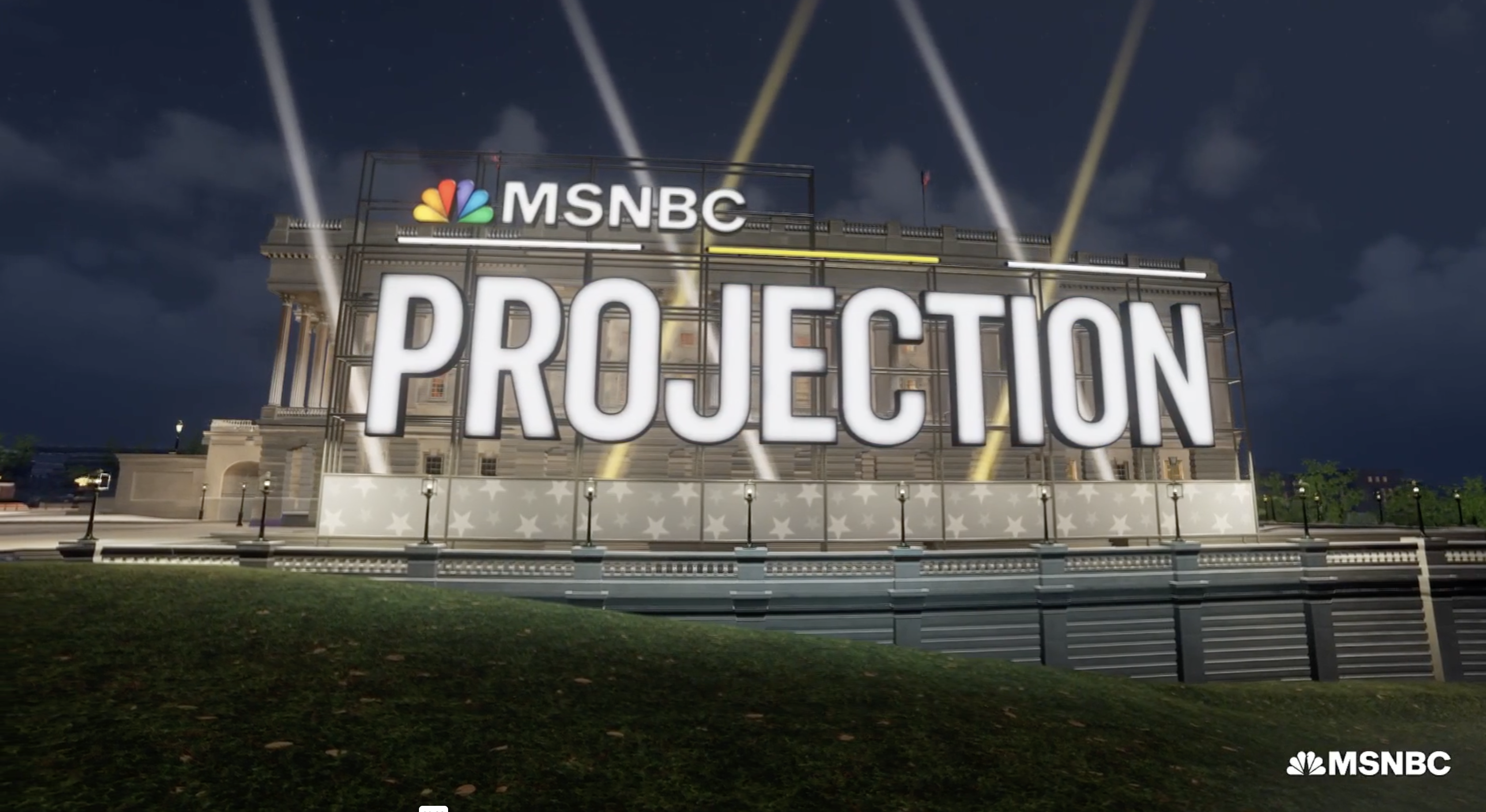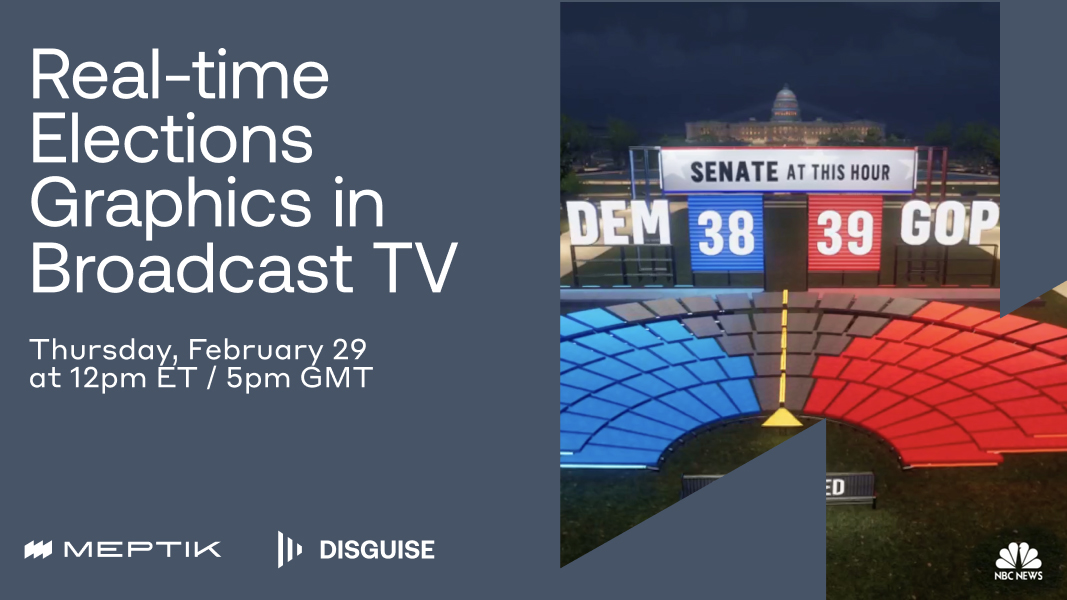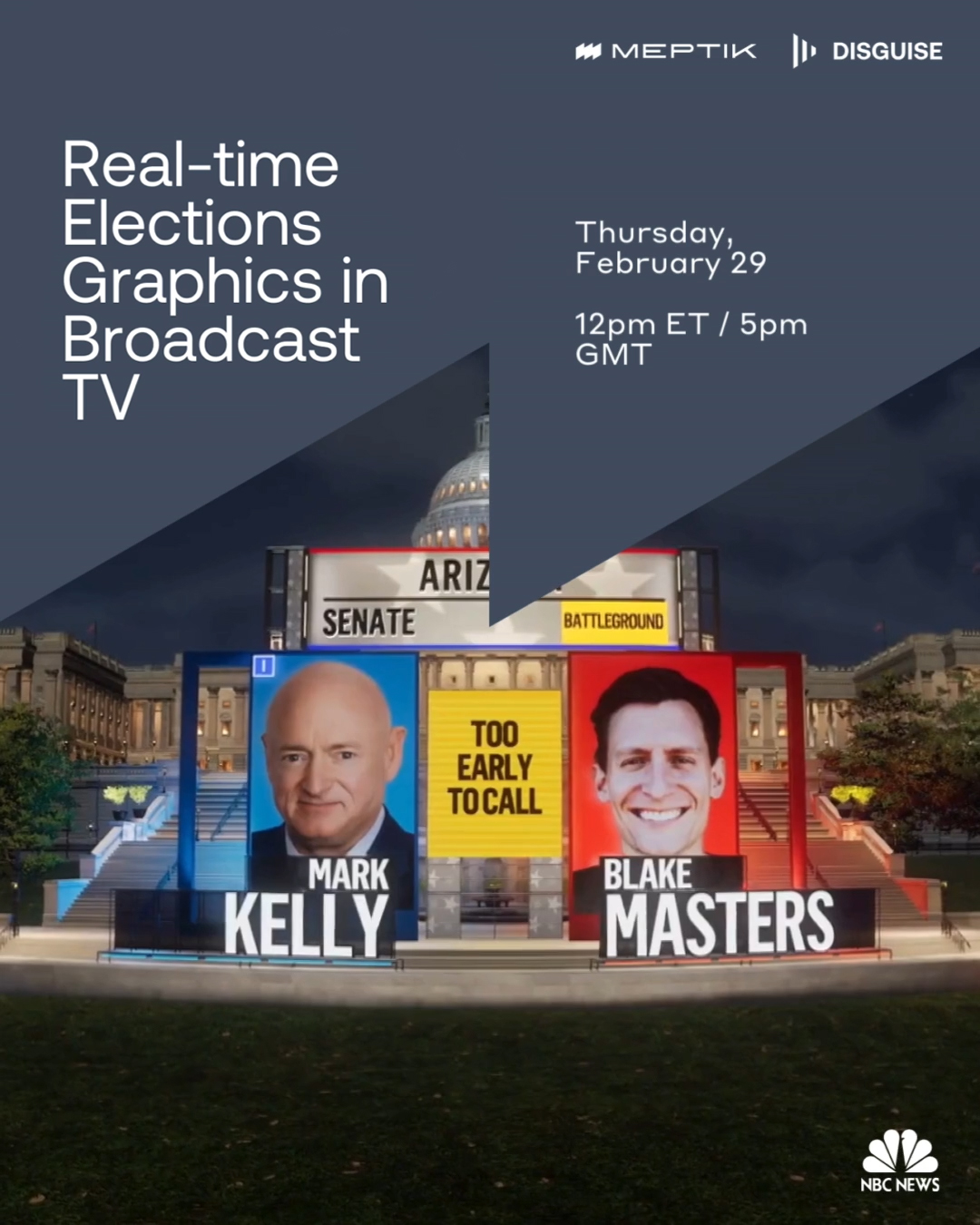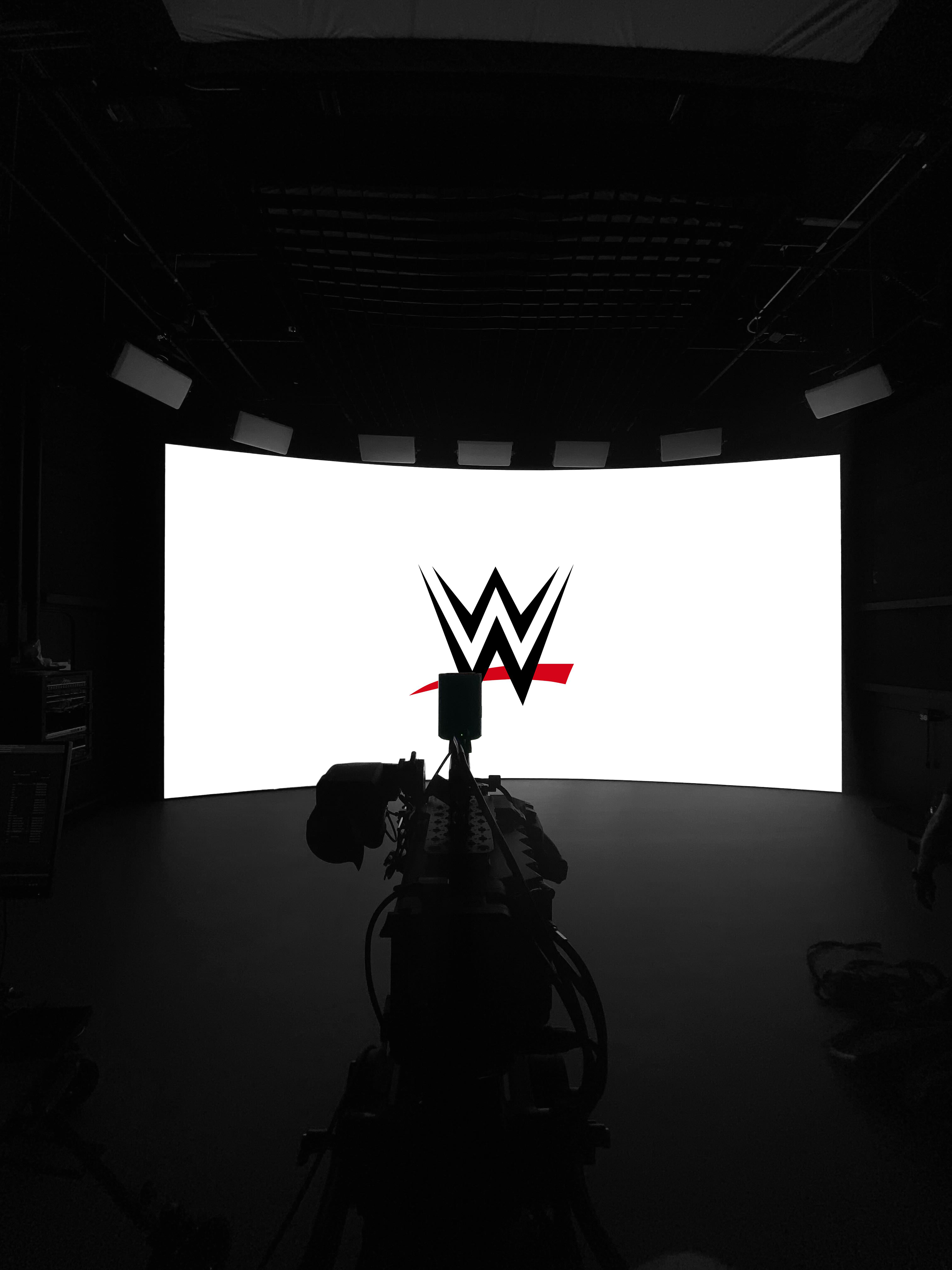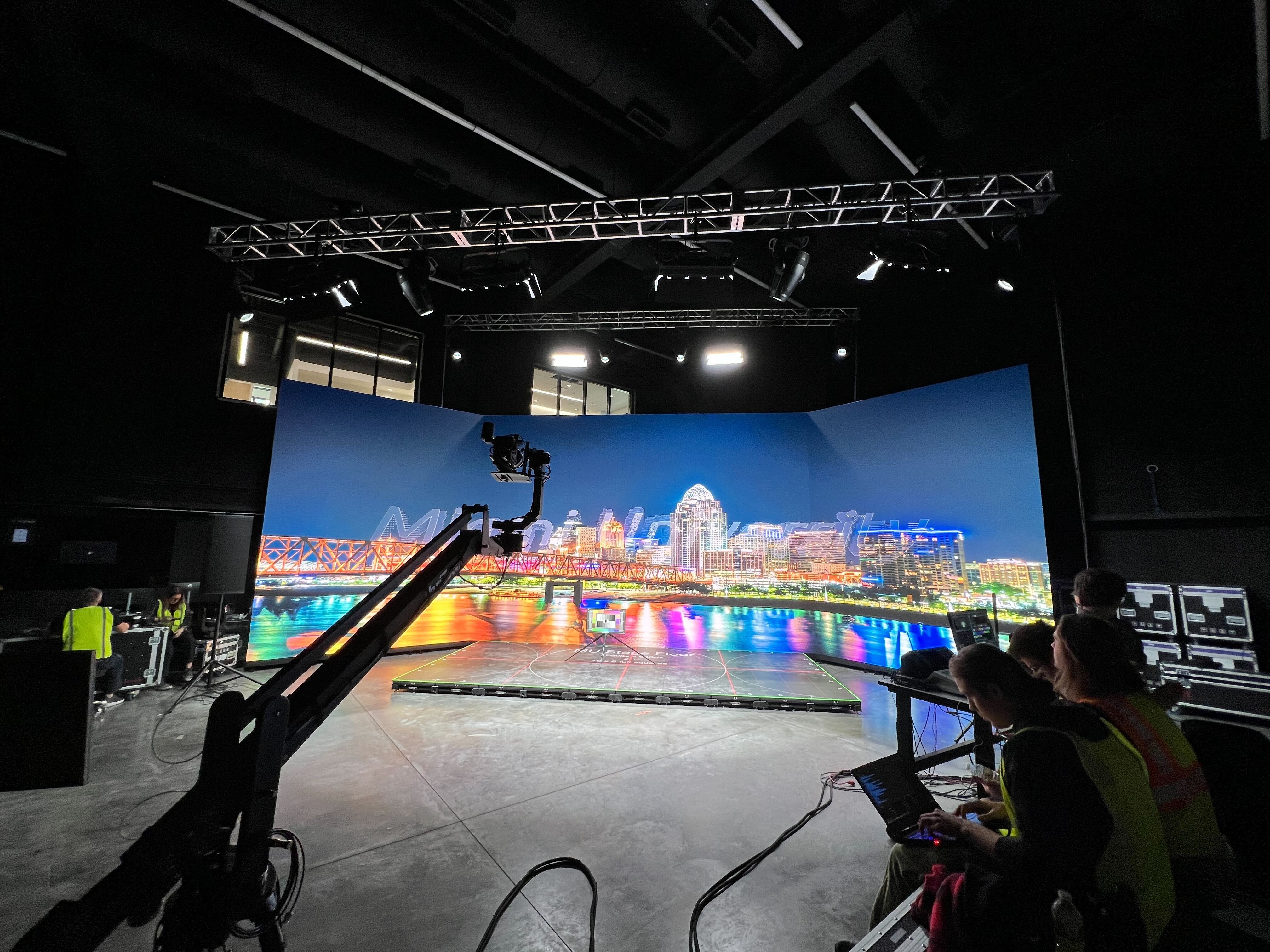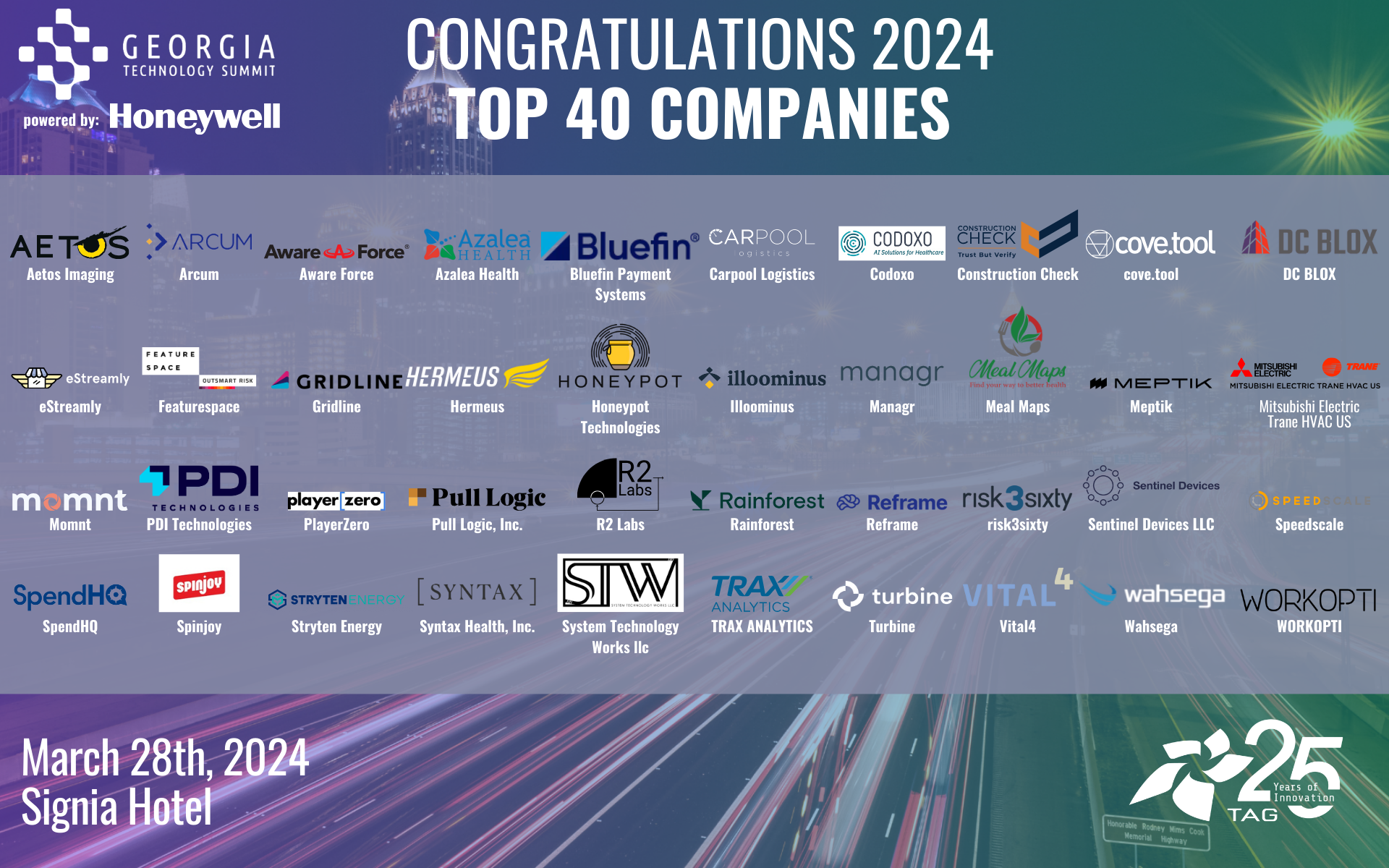About The Project:
In a groundbreaking approach to the 2022 midterm election coverage, NBC News and MSNBC, part of the NBCUniversal News Group, collaborated with the broadcast graphics team at Meptik to create an immersive viewing experience. Utilizing a digital twin of Washington DC's National Mall and Capitol Building, the visuals transported viewers into a dynamic virtual world.
Facing a tight three-month deadline, the Disguise team worked closely with NBC News and MSNBC Design and Data teams, integrating high-performance graphics into a green screen virtual studio production workflow. They utilized Disguise's PX+ server for optimal rendering performance, enabling the broadcasting teams to produce unique camera shots and graphics within the virtual Capitol area. This technical prowess allowed for seamless transitions between the studio and the virtual world, offering an unprecedented and highly engaging live election broadcast experience.
The Process:
What were the key components of the creative process for this project?
Miguel: A Key element of the process involved deeply integrating with the client's team, enabling us to effectively deliver on both technical and creative aspects of the project.
Our first step was to create a comprehensive understanding of the vision of NBC News and MSNBC.We wanted to ensure that our graphics not only conveyed information effectively but also captured the essence of the event in a groundbreaking way. We then got elbow deep into creating graphics and going through rounds of iterations, ensuring the client was happy with the end result. And last but not least - we helped the studio team to incorporate the graphics into the green screen virtual studio production workflow using Unreal Engine 5 Vanilla.
Throughout the process, we kept the viewer experience at the forefront. Our goal was to create broadcast graphics that were not just visually appealing but also informative and easy to comprehend.
Ideation:
How did the initial concept discussions with NBC News and MSNBC shape the project's direction?
Miguel: During our initial, in-depth conversations, we focused on grasping their specific goals for crafting a unique and immersive election night experience. This early phase was instrumental in setting the project's direction, ensuring our creative and technical direction was in sync with their vision.
As our project progressed, the customer's growing confidence in our team's abilities led to a dynamic evolution of ideas. Initially, we set out to demonstrate our capabilities to create a photo-realistic digital twin of the Washington Mall, intending to use it as a virtual backdrop. From there, our team designed a seamless data integration within this space, particularly focusing on the critical moment in the show where a real camera would flawlessly transition to a virtual flight through the virtual environment.
This innovative concept was more than just copying a physical location; it was about adding an exciting new dimension and deeper involvement to the way we cover elections. Our discussions revolved around leveraging this digital realm to elevate storytelling, simplify complex data, and ultimately forge a visually stunning experience that would captivate viewers.
What were the most innovative elements you wanted to introduce in this project during the early brainstorming sessions?
Miguel: The project featured several groundbreaking elements that set it apart. Firstly, the extensive use of lumen and Nanite, both new features of Unreal Engine 5 at the time, which were instrumental in achieving photorealism in a large-scale environment. These tools allowed us to create a detailed and lifelike digital twin of the location. Secondly, the project stood out for its innovative combination of hardware and software technologies. This blend was crucial for accomplishing the virtual camera handoff, a key aspect of the project that enabled a seamless transition between real and virtual environments. Lastly, the successful integration with the client's data sources was a significant achievement. This integration ensured that the digital environment was not only visually stunning but also rich in accurate and timely information, enhancing the overall experience and engagement.
How did you assess the technical feasibility of the ideas proposed?
Miguel: We conducted thorough explorations and experiments with cutting-edge technologies. Our team delved into the capabilities of Unreal Engine 5, challenging its limits to see if it could support the intricate details and vast scale required for the digital twin. We also rigorously tested Disguise’s PX+ server's performance to ensure it could handle the intensive demands of rendering high-quality, real-time graphics. This evaluation was crucial for ensuring seamless integration into the live broadcast environment. We focused on not only achieving technical viability but also maintaining a smooth, uninterrupted viewing experience, which was essential for the project's success.
